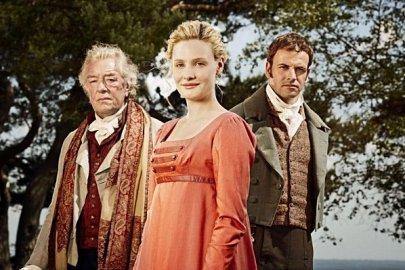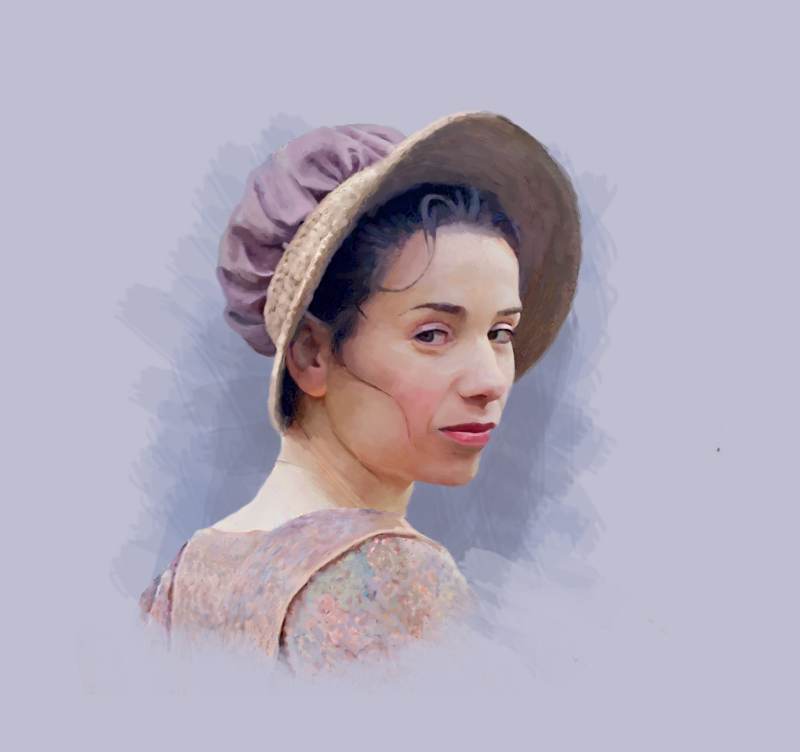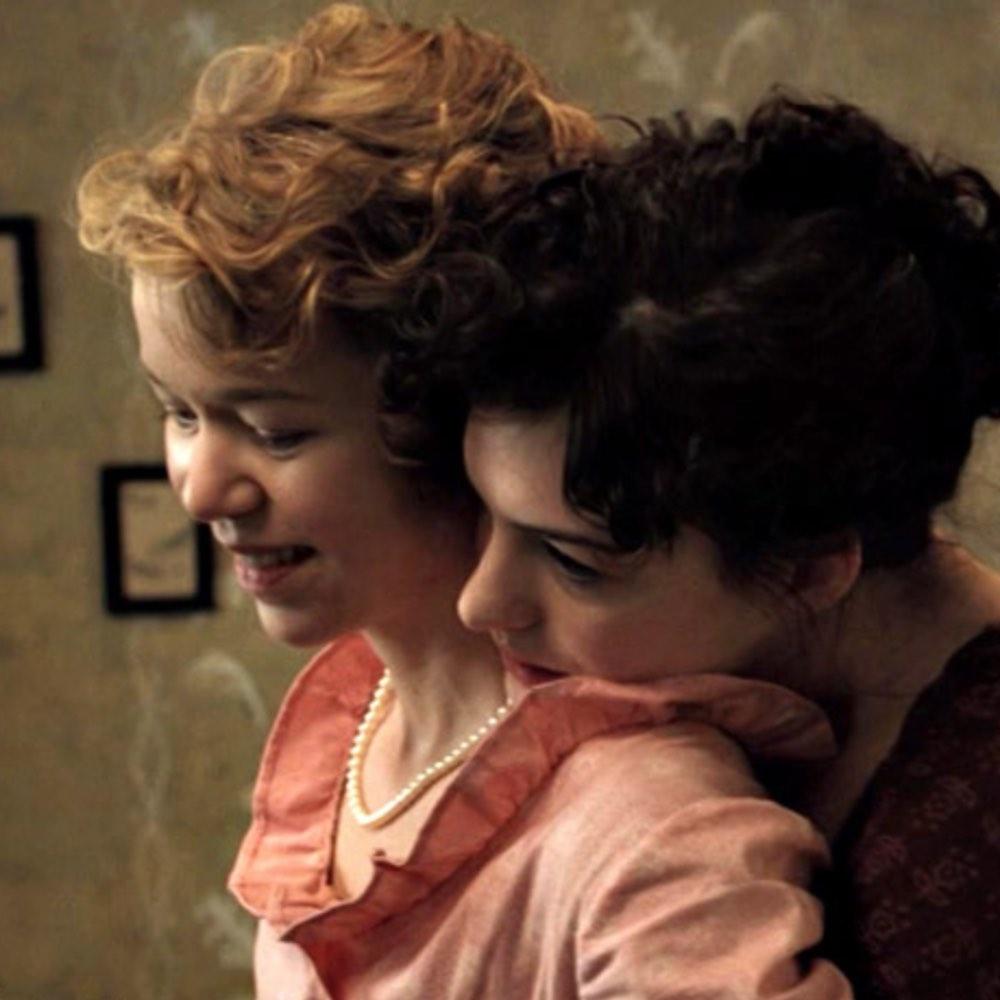
Austen’s Intentional Deprivation of Matriarchy
Through the absence, or the duplicity, of mother figures, Jane Austen presents the perceived illusion of matriarchy within the Regency culture.

During Austen's lifetime in England, patriarchy dictated the treatment of wealth, the home, the government, and relationships, which suppressed the leadership role of females. While Austen’s novels deal with these issues, the absence of strong and positive maternal figures highlights the muting of that designation. Those characteristics was usually reserved for the protagonists. Supporting characters, like Lady Catherine in Pride and Prejudice, Fanny Dashwood in Sense and Sensibility, and Mrs. Allen in Northanger Abbey, actively contribute to undermine the conventional role of mothers as moral and spiritual guides through ignorance, manipulation, or selfishness. Deceased characters also affect the actions of the present day, through the mystery of Mrs. Tilney’s death in Northanger Abbey, as well as the absence of Mrs. Woodhouse in Emma.
Austen uses these maternal characters to highlight social prejudices that contribute to creating these tropes by using irony and humor, and how an unjust system is in place to continuously silence strength in female leadership. By depriving the protagonists of mothers, a void is left that allows an interruption from matriarchal legacy by having the female protagonists subtly challenge older men in power. The traditional women of this era were completely reliant on their male relatives, or through their own marriage, and this dependence not only supported the patriarchal society but was created by it in the first place.
In Pride and Prejudice, Charlotte says, “Happiness in marriage is entirely a matter of chance” (61). Women’s social, economic, and financial safety was based on their relationships to men, a condition which provided and maintained the foundation for this culture and, because of this, females were cast in a subordinate role. Educations relied entirely on perfecting their social roles. Austen’s protagonists often gain insights and experience as they learn from situations outside of their prescribed schoolings, which Austen tends to reward with true love or self-awareness. The mother roles that do exist within Austen’s world seem to contribute to maintaining this patriarchy as they sometimes become obstacles for the protagonists to deal with directly.  Lady Catherine, in Pride and Prejudice, is the extreme of maintaining the patriarchy, as well as embodying an illusion of matriarchy. While she is viewed as an antagonist, she is simply a product of her system, which could be viewed as tragic. She is first introduced as the widow of Sir Lewis de Bourgh, which defines her as her marriage connection. Considering Darcy, her nephew, she is under the assumption that she is “entitled to know all his dearest concerns,” while, in reality, she does not (355). Her assumption of control, or of possessing an influential role of her nephew’s personal decisions, presents this illusion of matriarchy. Lady Catherine becomes an obstacle for Elizabeth to circumvent. Elizabeth is disrupting the old or traditional social order through her and Darcy’s deviation from his intended match, and Lady Catherine becomes agitated with this expression of freedom from cultural conditioning.
Lady Catherine, in Pride and Prejudice, is the extreme of maintaining the patriarchy, as well as embodying an illusion of matriarchy. While she is viewed as an antagonist, she is simply a product of her system, which could be viewed as tragic. She is first introduced as the widow of Sir Lewis de Bourgh, which defines her as her marriage connection. Considering Darcy, her nephew, she is under the assumption that she is “entitled to know all his dearest concerns,” while, in reality, she does not (355). Her assumption of control, or of possessing an influential role of her nephew’s personal decisions, presents this illusion of matriarchy. Lady Catherine becomes an obstacle for Elizabeth to circumvent. Elizabeth is disrupting the old or traditional social order through her and Darcy’s deviation from his intended match, and Lady Catherine becomes agitated with this expression of freedom from cultural conditioning.
Elizabeth directly presents Lady Catherine’s lack of power when she states that, according to Lady Catherine, their marriage has been “declared to be impossible” yet Lady Catherine has journeyed there to ask if there is an engagement (355). Elizabeth, in a sense, effectively exposes Lady Catherine’s own perceived power through circumventing each question by answering with a new question or answering drolly. Elizabeth states, “that if he (Darcy) is so, you can have no reason to suppose he will make an offer to me,” and Lady Catherine “hesitated for a moment” (355). This scene effectively presents how Elizabeth has power over a matriarch due to the latter’s fabricated sense of power. The new generation is usurping the past generations necessity for tradition.
A shadow-self of Lady Catherine is Fanny Dashwood, in Sense and Sensibility. Fanny’s perceived power is by proxy through the manipulation of her husband, John Dashwood. While she lacks power, she acts as a puppeteer, swaying her husband through careful wordplay and timing by manipulating the established gender roles. This reduces John, who embodies power because he is male and landowning, to a weak instrument for his wife’s selfish motivations. Fanny also contributes to maintaining the system by actively using it for her selfish ends. The article, 'Women Owning Property: The Great Lady in Jane Austen,' written by Rita Dashwood, states that,
In contrast to the way Georgian genteel women have been represented by scholars of the period, the great ladies in Jane Austen are not portrayed as either creators of spaces, managers of their property, or socially conscientious members of their community. Instead, they share various negative characteristics, with most of them being described as despotic and arrogant. (107)
Again, like Lady Catherine, Fanny is a product of the society in which she was born. To make matters worse, Fanny contributes to it, solidifying the foundation of patriarchy, which is a shame because her manipulations are calculated and intelligent. This begs the question as to why social maneuvering and spousal manipulation became a trademark within Austen’s characters.
Emma, in Emma, seems to have barely avoided this fate through gradual self-awareness and witnessing of relational consequences, though she never actually had any obstacle to overcome, besides herself. Men, possessing a societal freedom when in control of wealth, are also a product of their society, yet are less tragic. The circumstance of being a white male with wealth allows them to possess societal freedom and individual choice by way of a prescribed path without having to succumb to arrogance or selfish acts for survival. Darcy, Edward Ferrars, Capt. Wentworth, and Henry Tilney are examples of this concept, despite the origin of their finances being vastly different. Money becomes the determining factor, defining the foundation of relations, the authenticity of character, and choice of romantic prospects. The anxieties of acquiring a tarnished reputation or prohibited from inheritance are never a factor for these men because the society operates in their favor. These men are allowed to retain their honesty and sensibility and never succumb to desperate acts in order to survive.

The absence of a matriarchical order can showcase more than having one to deconstruct. When a maternal figure is lacking, a void becomes louder than an actual presence. Emma’s mother, though deceased, still influences events throughout the present day. Her maternal influence was her governess Miss Taylor, who, although caring, can still be considered hired help. Emma had economic and social power over her own maternal figure, which lead to Emma being ‘slightly’ spoiled and “the power of having rather too much her own way,” due to the fact that she had “been mistress of his house from a very early period” (1). Emma is thrust into a powerful role at such a young age created in her the illusion of matriarchy. This is also evident in her reliance on the class system when marriage was being considered between two parties.
Emma’s relationships are based entirely on her status and not because of who she is as a person. In the beginning, Emma thwarts Mr. Martin and Harriet’s pairing because a rebellion against the patriarchal foundation was needed for it to commence. Austen complicates the established foundation by rewarding risk taking with relations. Kathleen Dougherty, the author of “Marriage and Friendship in Jane Austen: Self-knowledge, Virtue, and the “Second Self”,” claims that, “In Austen’s world, those who choose well choose for virtue and compatibility, not merely status or security. And a seeming lack of status can even be overcome if one’s character is thought to be good enough" (Dougherty 54). Through Emma’s trials, with her own self the obstacle, she creates a moral system which is removed from the patriarchic foundation.
The absorption of her mother’s role within the society has evolved with Emma’s winning battle over her own conditioning. Her true character overwhelms the societal illusion. Austen’s absent mothers subtly undermine male authority. They are not partaking in it whatsoever. The void causes a vacuum for creating unlimited potential within the heroines, something that the patriarchy would be threatened by. Despite there being a loss, it allows the opportunity for social shifting. Emma is the epitome of this. Frances L. Restuccia’ article, “A Black Morning: Kristevan Melancholia in Jane Austen's Emma,” discusses this, as Restuccia writes, “Emma begins by offering a glimpse of the abyss--sustained throughout the novel by the accumulation of lost, dead, and dying mothers--for which it attempts to provide compensation.”
Emma has social luxuries and engages with the members of her community as if they were puppets. More importantly, she influences them and this freedom and control occurs after she is the only female living in Hartfield. Her father is considered impotent by social standards, with being designated as feeble and nervous, much akin to an infant baby. His greatest actions are merely walking the grounds or entertaining guests. Emma has no paternal influence over her, allowing her to flourish as an individual with power. She has freedom because she has personal choice. Knightly reinforces Emma to conform to the Regency’s social standards with his moving into Hartfield, establishing a dominant male presence within the home.

Despite the absent mother remaining present within the story, Austen also uses them as a literary technique to highlight character traits with the mystery surrounding the death of Mrs. Tilney in Northanger Abbey. Catherine Morland, the youngest heroine, has several women in the position of matriarchy. Mrs. Allen is the obvious choice as she is the one to support her entrance into the social world. Mrs. Allen shares with her the societal rules, as Austen writes, “she was admirably fitted to introduce a young lady into public, being as fond of going everywhere and seeing everything herself as any young lady could be. Dress was her passion. She had a most harmless delight in being fine” (10). Mrs. Allen represents this false authority and Austen categorizes her as a woman, “whose society can raise no other emotion than surprise at there being any men in the world who could like them well enough to marry them” (10). Mrs. Allen's presence is presented as superficial and playful due to Austen using sarcasm her description of Catherine’s chaperone in view of society.
Mrs. Allen’s greatest power is her ability to camouflage herself within her social structure, which lessens her illusion of power even more than the others. Nothing about her is special and her individuality, and power, is drowned under the weight of maintaining the patriarchal order. An impressionable girl like Catherine would gravitate toward a force that stands out of a crowd. Learning about the death of Mrs. Tilney allows Catherine to formulate her own perspective, and version, of events that occurred before her connection with the Tilney family. Another void is opened and it allows Catherine to momentarily escape the Georgian society.
Catherine delves into a fictional world where the monsters are defined by their murderous actions instead of their inability to recognize power in matriarchy. Mrs. Tilney’s absence elevates her into becoming something more than another Mrs. Allen, who is merely existing within the society. The search for answers about Mrs. Tilney's death mirrors a yearning for a mother figure. Catherine is passionate about learning more. Austen writes, “Catherine had never heard Mrs. Tilney mentioned in the family before, and the interest excited by this tender remembrance showed itself directly in her altered countenance, and in the attentive pause with which she waited for something more” (131). Catherine is temporarily elevated away from patriarchy as well, and she becomes a heroine within a story that will lead to adventure, discovery, power, and an ability to self-govern, something that her actual society denies her. The absence of Mrs. Tinley allows this flight of fancy to occur, something that Mrs. Allen or her own mother would be unable to do. This allows Catherine to actively engage with General Tilney, circumventing safeguards like matriarchal figures.
Austen’s heroines need a minor escape from the patriarchal structure to realize the individual power that exists outside of domineering men and complacent women. In Austen’s world, the protagonists are journeying on unaccompanied explorations, creating their own sense of the world. In the article “Motherhood and Reality in Northanger Abbey,” written by Elvira Casal, the concept of embarking on solo journeys are necessary for emotional growth and connection. Casal writes:
The heroines of the novels are daughters, not mothers, and the novels focus on the stage of a woman’s life when she is least likely to feel close to her mother. Falling in love and marrying involve reaching outside a person’s original family for love, affection, and validation. Choosing a husband therefore implicitly requires the daughter’s emotional movement away from the mother. (146)

This scenario plays out in many instances in Austen’s texts. Mothers, or mother figures, represent traditions, usually imploring the heroines to make socially safe decisions and prevent societal risk. If this is the model that mother figures promote, then Elizabeth would have married Mr. Collins and Catherine Morland would have married John Thorpe. Safe decisions adhere to tradition, therefore losing individual choice and succumbing to patriarchy yet again. Women traditionally married to survive, promoting arrogant men, like Thorpe, or pompous men, like Collins, as suitable candidates, while forsaking good men like Mr. Martin or Capt. Wentworth due to their untraditional status.
The void of a maternal presence affects characters differently. There is a freedom with loss, as well as a grief. Emma becomes a valued member of her town. She suppresses nothing. Catherine Morland creates her own experiences without influence from her mother or Mrs. Allen. There is no intermediary between her and courtship or adventures. The void of a mother figure results in creating unrecognized freedom from the patriarchal influence. Mothers were not present to steer their daughter’s paths along the established and conformed road. On the contrary, women a bit older than our heroines, not only exist in patriarchy, but they contribute to it with false power. Fanny Dashwood employs her husband’s gender for her personal use. Instead of challenging patriarchy, she accepts it and practices it. Lady Catherine not only accepts it but actively represents it. She operates under the pretense that she has power because of her lineage while her wishes seem to be ignored.
No matter the significance, Austen’s heroines have a loss of a powerful maternal presence in common. Some can find that the lack of a matriarch only reinforces patriarchy but there is significant evidence to suggest that power is created because of that loss. Austen subtly challenges her societal foundation by severing the link between generations, and by undercutting a powerful maternal authority, the heroines begin to rely on their own individuality for direction, sustenance, and power. They are personally prosperous, despite lacking maternal influence or societal power, and their wit and sensibility are often rewarded. As the possession of wealth being usually denied, with inheritance going to males, and women lacking supremacy of their fates, Austen’s heroines had to rely on their character for survival and guidance, and the lack of mother figures allowed for this situation to occur.
***
Work Cited
Austen, Jane. Northanger Abbey, Lady Susan, The Watsons, and Sandition. Oxford World’s Classics. 2008. Print.
Austen, Jane. Pride and Prejudice. ed. Robert P. Irvine. Peterborough: Broadview Press, 2002
Austen. Jane. Sense and Sensibility. Penguin Random House. 2014. Print
Casal, Elvira. “Motherhood and Reality in Northanger Abbey”. Persuasions: The Jane Austen Journal. JASNA. No. 20, 1998. 146-153.
Dashwood, Rita. “Women Owning Property: The Great Lady in Jane Austen”Jane Austen and Philosophy. Edited by Mimi Marinucci. Rowland and Littlefield. 2017.
Dougherty, Kathleen. “Marriage and Friendship in Jane Austen: Self-knowledge, Virtue, and the “Second Self””Jane Austen and Philosophy.Edited by Mimi Marinucci. Rowland and Littlefield. 2017.
Restuccia, Frances L. "A Black Morning: Kristevan Melancholia in Jane Austen's Emma." American Imago, vol. 51, no. 4, 1994, p. 447+
About the author
Mark Massaro received his Master’s Degree in English Literature from Florida Gulf Coast University with a focus on 20th Century American Literature. He is an English Instructor at two universities. When not reading or writing, he can be found in his black Chucks at a bonfire in his home state of Massachusetts, talking with friends and listening to classic rock. His creative works have been published in Literary Juice Magazine, The Pegasus Review, and The Mangrove Review. His happiness is being next to his wife, with their son in his arms, and their golden retriever curled up nearby.



Leave a comment
This site is protected by reCAPTCHA and the Google Privacy Policy and Terms of Service apply.